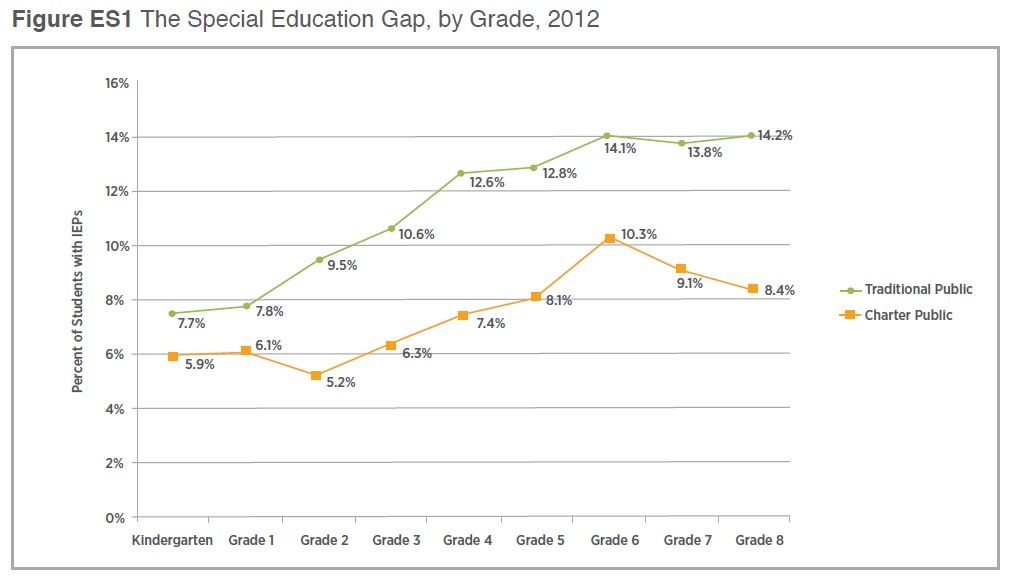Are special needs students being pushed out of public charter schools? Enrollment data shows special needs enrollment in charter schools is lower than in traditional public schools, and critics have used this data to accuse charter schools of discrimination. But is this outcome the result of nefarious motives?
No, according to a new paper by Marcus Winters of the University of Colorado, who examined the large and growing special needs enrollment gap in Denver.
According to Winters, “Nearly half (46 percent) of the growth in the gap between kindergarten and fifth grade occurs because charter schools are less likely to classify students as in need of special education services, and more likely to declassify them, than are traditional public schools.”
You might think removing the “special needs” classification from students is a way to cheat federal rules governing special needs education. But a large percentage of Denver-area special needs students were classified with “specific learning disability,” the least severe classification.
Previous research by Jay P. Greene of the University of Arkansas found public schools might be over prescribing this “specific learning disability” classification, in part due to the additional funding provided by state and federal programs. Charter schools may simply be recognizing that these students aren’t struggling because of a learning disability, but because of other factors (perhaps a disruptive home environment, lack of good nutrition, or poor instruction from a previous teacher).
The remainder of the gap in Denver is explained by growing enrollment in higher grades of students who aren’t classified as special needs.
The report’s findings aren’t a surprise. Many of them echo a previous study on charter schools in New York City.
Winters also found 65 percent of special needs charter school students remained enrolled in their original charter school, nearly double the rate of special needs students in public schools. If charters were counseling out special needs students, we would expect these students to transfer to other schools at higher rates than public schools. But this is not occurring.
One question that requires more investigation is the initial enrollment gap of two points. This gap could be the result of admissions discrimination, as critics and the U.S. Department of Education contend. Or it could be that traditional public schools generally have more resources to devote to special needs students, or that many traditional public school parents are satisfied with their schools and reluctant to transfer to a charter.
As we discussed on this blog earlier, new regulations may not be the best way to address these gaps. It may be better to ensure all schools have the resources they need to educate the students who enroll.



